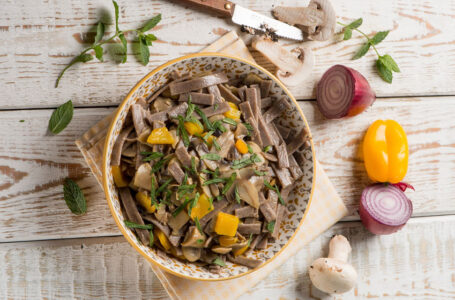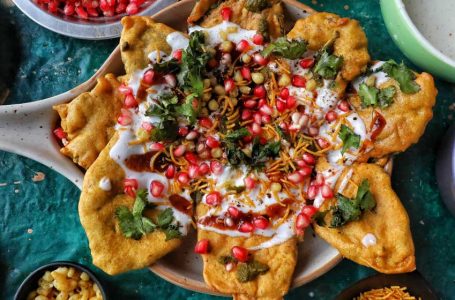Delicious delights for the vegetarians

When it comes to non-vegetarian food, there are plenty of options available, be it chicken roast, tandoori chicken, pork tenderloins, beef wellington, etc. Therefore, people cook various dishes during family gatherings and social events; however, people who prefer non-veg seem to have limited options to choose from in social gatherings.
So, it is always good to have some recipes for delicious vegetarian dishes you can cook at home and prepare for different events.
Pulao
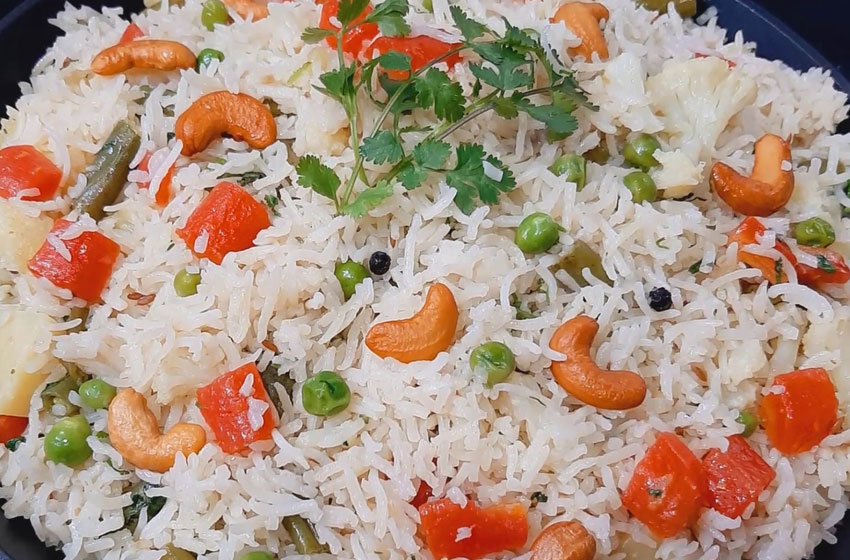
Pulao is a rice dish made with basmati rice, aromatic herbs and spices; it is a simple dish and a vegetarian version of biryani. Also, there are different methods of making vegetable pulao; each state in India has different ways of making it. In the first step, wash the rice and soak it in water for 15-20 minutes, then drain and keep it aside until needed.
- Heat ghee and oil together in a pressure cooker (2-litre capacity, stainless steel cooker) on low flame. Add bay leaf, cinnamon, clove, and sauté for 30 seconds, then add onion and sauté until it turns light brown or for approx. 2 minutes. Next, add chopped tomato, green peas, french beans and carrot; stir them for approximately two minutes.
- Add soaked (drained) rice, garam masala powder, turmeric powder, red chilli powder and salt and stir fry them for two minutes. Add one cup of water and mix all the ingredients well; close the lid and cook over medium flame for two whistles. However, when you hear the first whistle, reduce the flame to low and cook until you hear another whistle, then turn off the stove.
- Finally, let it cool at room temperature until the pressure inside the cooker comes down naturally. Then, open the lid carefully and fluff the rice with a fork; transfer it to a serving bowl and garnish the pulao with fresh coriander leaves.
P.s- You can prepare it in large quantities in a larger pressure cooker. Just use rice and water in 1:2 ratios. i.e. for every one cup of rice, add two cups of water. Also, you can add paneer cubes to the pulao while stirring the vegetables.
Mughlai Shahi Paneer
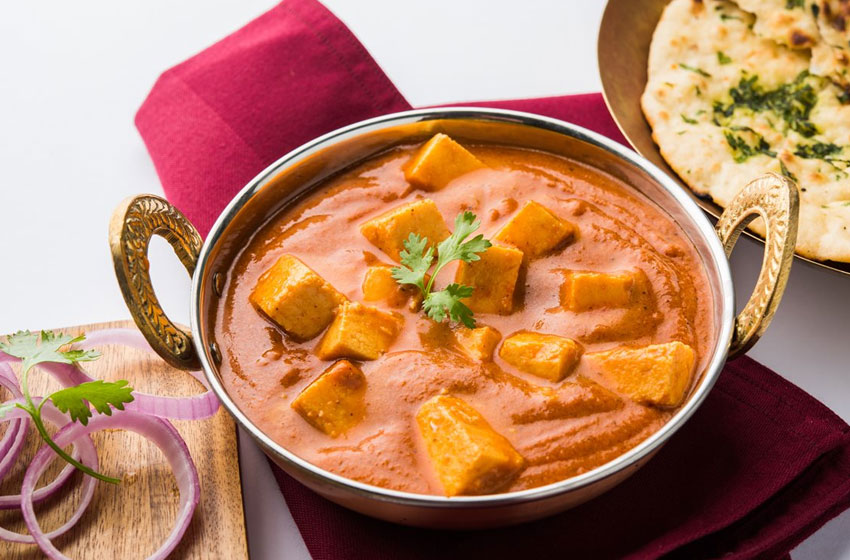
Mughlai cuisine flourished during the Mughal’s reign in India, and the food is distinguished from other foods due to its rich and creamy texture. Moreover, the use of whole spices gave a complex flavour and rose, and the kewra water gave a pleasant fragrance to the dish.
- Heat one tablespoon of ghee in a saucepan on medium flame and add 12 whole or split cashews, eight almonds and 2 to 3 cardamoms. Shallow fry them for 2 to 3 minutes; ensure not to burn them. Then, add 1 cup of cubed onions and one chilli; saute the onions until they turn transparent; cook the onion and nut mixture until the onions turn soft and add a little oil or water if the mixture sticks to the pan. Then, remove them from the flame, let them cool, and blend them into a smooth, thick paste. Do not add too much water as it will make the mixture runny.
- In the same pan, heat one tablespoon of ghee, add one tablespoon of cumin or shahi jeera, 2 to 3 cloves, and 1 to 2-inch cinnamon. Saute the whole spices for 1 to 2 minutes on low heat until they turn fragrant. Next, add one teaspoon of ginger and garlic paste and saute them until the raw smell disappears.
- Then add the previously made onion and nut paste, ¼ teaspoon of red chilli powder, Add ½ to 1 teaspoon of sugar and salt according to taste, ¾ teaspoon of garam masala, ⅛ teaspoon of turmeric powder and ½ teaspoon of salt. Mix all the ingredients nicely and cook them for 3 to 4 minutes; the mixture will thicken as you cook. In the meantime, in a bowl, whisk ½ cup of thick plain curd/yoghurt until it is smooth and creamy. Lower the heat and the plain yoghurt in the spices mixture.
- Then, cook the mixture until it becomes thick and leaves the pan’s sides; add ½ to ¾ cup of water and a few strands of saffron. Add more water if you prefer runny gravy. Additionally, cook the sauce until it releases oil or ghee on the surface and add more salt or spices per your taste.
- Add the paneer cubes when the gravy reaches the desired consistency and let it simmer for 1 to 2 minutes. Then, drizzle 2 to 4 drops of kewra water and three tablespoons of cream, pour the shahi Mughlai paneer into a bowl, and sprinkle some crushed pepper on top.
Malai Kofta
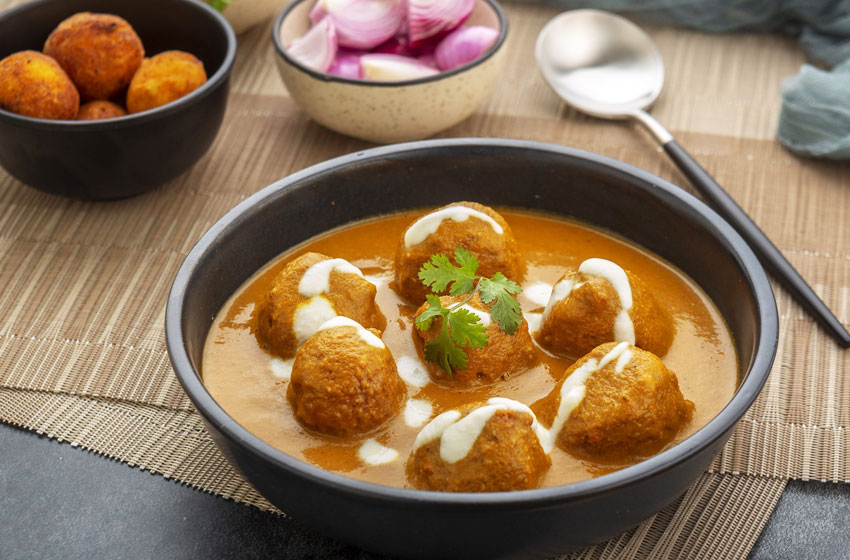
- Crisp on the outside and heavenly smooth on the inside, these tasty fried dumplings are dunked in a soft, mildly sweet and lighted spiced curry. The combination of the kofta with the curry tastes incredible. First, boil two medium to large potatoes (200 grams) in a pan, Instant pot or a pressure cooker until fork tender or knife tender. When the potatoes become warm or cool, peel them and grate them in a bowl. Use a box grater or a hand-held grater.
- Add 100 grams grated paneer or 1 cup grated paneer¼ teaspoon red chilli powder (or cayenne pepper or paprika), ¼ teaspoon garam masala powder and salt as required. Next, add two tablespoons cornflour (cornstarch) or tapioca starch and three tablespoons almond flour or fine almond meal.
- Mix well until the mixture is uniform and make a neat dough. Cover and set aside. Meanwhile, rinse if you prefer and finely chop 10 to 12 cashews and one tablespoon of raisins. Set aside. This will be the sweet-tangy and crunchy stuffing for the kofta; if you are not a fan of cashews or raisins, choose to skip the filling or use your favourite nuts.
- Portion the kofta mixture and shape it into medium-sized balls. Take one kofta ball and flatten it with your palms.
- Place a small portion of the cashews and raisins stuffing on flattened kofta dough. If it feels sticky, rub oil on your palms before stuffing and shaping the kofta.
- Bring the edges together and shape them into a neat ball. Ensure that the stuffing remains in the centre and shape all the kofta balls. Cover with a lid and set aside at room temperature or refrigerate for 30 minutes.
For the kofta curry
- Prepare cashew paste, onion paste and tomato puree and set them aside. Then, heat three tablespoons of oil in a thick-bottomed or heavy frying pan or a wok (Kadai). Add one tej patta (Indian bay leaf), 1-inch cinnamon, one black cardamom, two green cardamoms, two single mace strands and two cloves.
- Then, add the onion paste and saute it on a low to medium flame. After 9 to 10 minutes on a low to medium-low heat, the onion paste will become light golden, get cooked and leave the sides of the pan.
- As you continue to sauté, It will become lumpy, start gathering around itself and gradually become golden. Stir non-stop so that the onion paste cooks evenly.
- While sautéing onions, if they start sticking onto the pan, add a few water splashes. Mix and deglaze, removing the stuck onion paste particles from the pan. Continue to sauté.
- When onion paste has become golden, add two teaspoons of ginger-garlic paste. Mix and sauté for about 10 seconds or until the raw aroma of ginger; garlic goes away. Then add the tomato puree, mix and saute for 5 to 6 minutes. Next, add ¼ teaspoon of turmeric powder, ¼ teaspoon of fennel powder – optional, ¼ teaspoon of cumin powder, one teaspoon of coriander powder, and1 a teaspoon of Kashmiri red chilli powder or paprika (or ½ teaspoon red chilli powder or cayenne).
- Mix well and sauté for 4 to 5 minutes and add the cashew paste. Mix and sauté till the oil starts to leave the side of the masala paste. Moreover, it will take about 9 to 10 minutes on low to medium-low heat. The paste will become lumpy and gather around itself. It will also become slightly glossy, releasing oil from the sides.
- Add ½ to 1 teaspoon sugar and salt according to taste. Next, add 2 cups of water. Then, combine water thoroughly with the sautéed masala paste with a spoon or wired whisk.
- Simmer for 8 to 10 minutes on low to medium-low heat or until the gravy becomes thick and creamy. You should also see some oil specks on the top layer of the sauce. Next, add one teaspoon of Kasuri methi (dry fenugreek leaves) and two tablespoons of light cream or cooking cream.
- Crush the dried fenugreek leaves in your palms and add and let it simmer for 1 to 2 minutes more; mix well and switch off the heat. Check the taste of the curry and add sugar or salt if needed.
- Then shallow or deep fry the koftas on low to medium heat. Remove to a paper towel-lined plate. Working in batches, fry all the paneer kofta this way and drain them on a paper napkin so that the extra oil is absorbed. Gently place the paneer kofta on the gravy. Pour a drizzle of cream or top with grated paneer. Finally, garnish malai kofta with coriander or mint leaves and serve with roti, naan or jeera rice, saffron rice, paratha or rumali roti.



